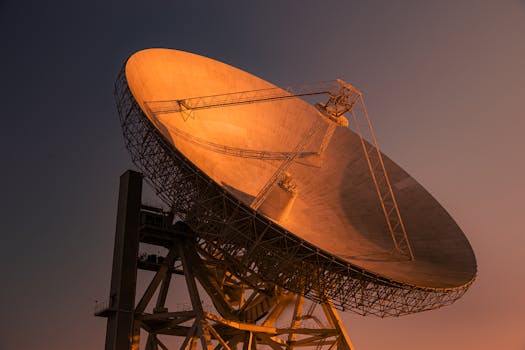GEO Satellites: Understanding the Technology and Applications
GEO satellites play a crucial role in modern telecommunications, providing global coverage and enabling a wide range of applications. In this article, we will delve into the world of GEO satellites, exploring their technology, applications, and impact on the telecommunications industry.

GEO Satellites: Understanding the Technology and Applications
GEO satellites, or Geostationary Earth Orbit satellites, are a type of satellite that orbits the Earth at an altitude of approximately 36,000 kilometers, remaining stationary relative to a fixed point on the equator. This unique characteristic allows GEO satellites to provide continuous coverage of a specific region, making them ideal for a variety of applications, including telecommunications, weather forecasting, and navigation.
GEO satellites have been in use for several decades, with the first GEO satellite, Syncom 2, launched in 1963. Since then, the technology has evolved significantly, with modern GEO satellites offering higher bandwidth, greater connectivity, and improved performance. Today, GEO satellites play a vital role in the global telecommunications network, providing connectivity to remote and underserved areas, as well as enabling the transmission of data, voice, and video services.
How GEO Satellites Work
GEO satellites operate by transmitting and receiving signals to and from Earth stations, which are specialized antennas located on the ground. The signals are transmitted to the satellite, which then amplifies and re-transmits them back to Earth, allowing for communication between different regions. The satellite’s geostationary orbit allows it to maintain a fixed position relative to the Earth, ensuring continuous coverage of a specific area.
The technology used in GEO satellites is complex and involves a range of components, including transponders, antennas, and propulsion systems. Transponders are responsible for receiving and transmitting signals, while antennas are used to communicate with Earth stations. Propulsion systems, such as ion thrusters, are used to maintain the satellite’s position and altitude.
Applications of GEO Satellites
GEO satellites have a wide range of applications, including telecommunications, weather forecasting, navigation, and Earth observation. In the telecommunications sector, GEO satellites provide connectivity to remote and underserved areas, enabling the transmission of data, voice, and video services. They are also used for broadcast services, such as television and radio, as well as for broadband internet access.
In the field of weather forecasting, GEO satellites are used to monitor cloud patterns, atmospheric conditions, and other weather-related phenomena. This data is used to predict weather patterns and provide early warnings for severe weather events. Navigation systems, such as GPS, also rely on GEO satellites to provide location information and timing signals.
Earth observation is another significant application of GEO satellites, with satellites used to monitor environmental changes, track natural disasters, and manage natural resources. This information is used to inform decision-making and policy development, as well as to respond to emergencies and disasters.
Future of GEO Satellites
The future of GEO satellites is exciting and rapidly evolving. Advances in technology are enabling the development of more powerful and efficient satellites, with higher bandwidth and greater connectivity. The increasing demand for broadband internet access, particularly in remote and underserved areas, is driving the growth of the GEO satellite market.
New applications, such as the Internet of Things (IoT) and 5G networks, are also emerging, and GEO satellites are well-positioned to play a key role in these developments. The use of GEO satellites in IoT applications, such as smart cities and industrial automation, is expected to increase, as is their use in 5G networks, where they will provide backup and complementary connectivity.



